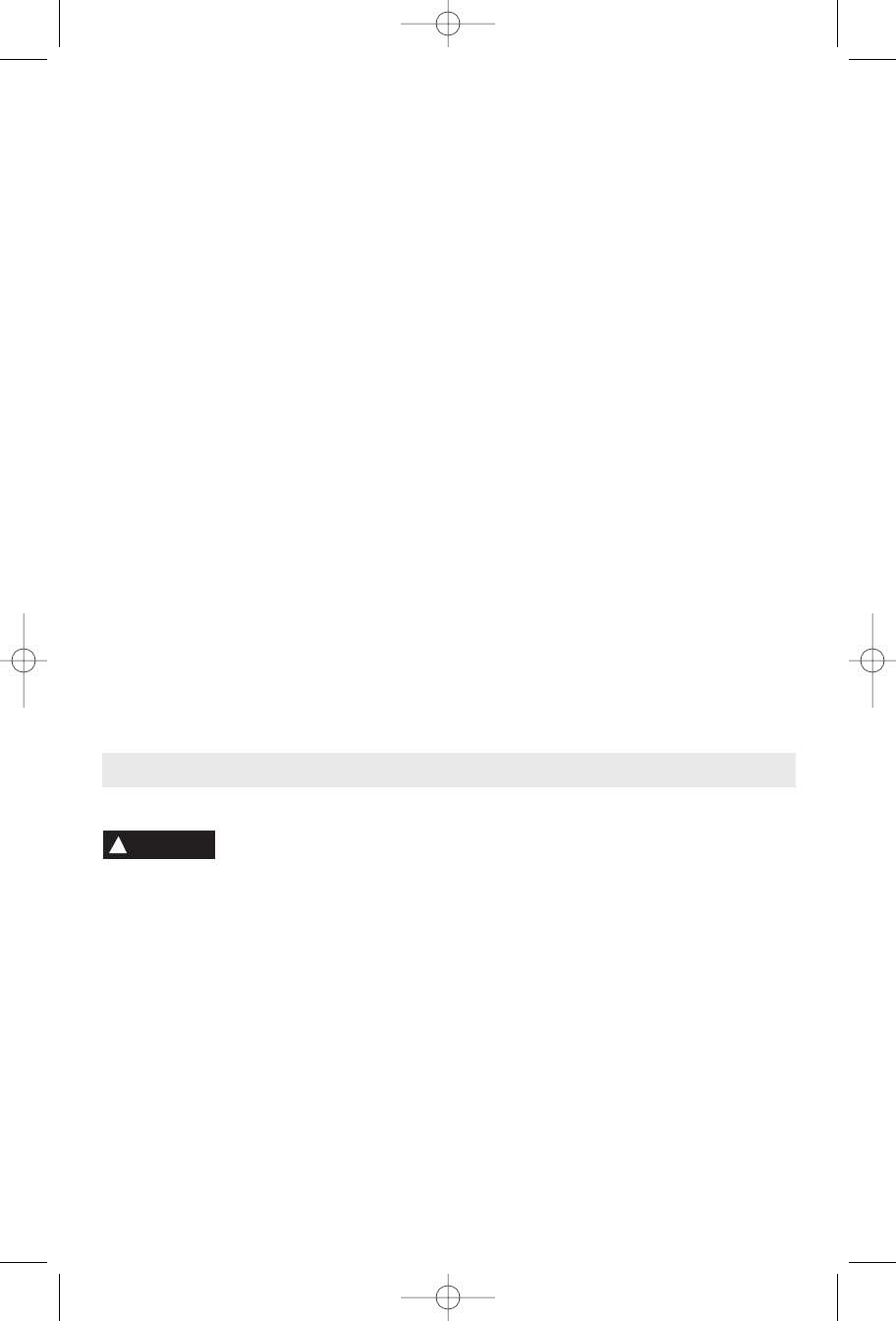
Service
Preventive maintenance
performed by unauth-
orized personnel may result in misplacing
of internal wires and components which
could cause serious hazard.
We
recommend that all tool service be performed
by a Bosch Factory Service Center or Autho-
rized Bosch Service Station.
TOOL LUBRICATION
Your Bosch tool has been properly lubricated
and is ready to use. It is recommended that
tools with gears be regreased with a special
gear lubricant at every brush change.
CARBON BRUSHES
The brushes and commutator in your tool
have been engineered for many hours of
dependable service. To maintain peak
efficiency of the motor, we recommend every
two to six months the brushes be examined.
Only genuine Bosch replacement brushes
specially designed for your tool should be
used.
BEARINGS
After about 300-400 hours of operation, or at
every second brush change, the bearings
should be replaced at Bosch Factory Service
Center or Authorized Bosch Service Station.
Bearings which become noisy (due to heavy
load or very abrasive material cutting) should
be replaced at once to avoid overheating or
motor failure.
!
WARNING
Maintenance
-10-
You will extend the life of your bits and do
neater work if you always put the bit in contact
with the workpiece BEFORE pulling the
t
rigger. During operation, hold the drill firmly
a
nd exert moderate, steady pressure. Too
m
uch pressure at low speed will stall the
hammer. Too little pressure will keep the bit
from cutting and cause excess friction by
sliding over the surface. This can be
damaging to the drill and bit.
Shanks of all drill bits should be wiped clean
prior to using and immediately after removing.
Recall these instructions for safe
operation:
1. Some materials require slow drilling
speeds; whereas, others require higher speed
to produce the best results.
2. All work must be supported or secured
before drilling and steady, even pressure
applied in line with the drill bit.
3. As the drill bit cuts through the opposite
side, reduce the pressure and continue
running the drill as the bit is withdrawn.
Materials such as glass, porcelain, ceramics,
tiles, plastics, etc., should be drilled at low
speeds with specially designed drill bits and
lubricants.
DRILLING WOOD OR PLASTIC
If backing block is not used, ease up on the
pressure just before the bit breaks through
t
he wood to avoid splintering. Complete the
h
ole from the opposite side immediately after
t
he point breaks through. If bit binds, reverse
the drilling operation to help remove the bit
from the work.
DRILLING METAL
Make a center punch in the material for
easier starting. Use enough pressure to keep
the bit cutting. If the bit is allowed to merely
spin in the hole, it will become dull within a
short time. When drilling a larger hole, it is
faster and easier on your power pack to first
make a smaller hole and enlarge it to the
required size. Lubricate the tip of the bit
occasionally with CUTTING OIL for easier
metal drilling. If bit binds, reverse the drilling
to help remove the bit from the work.
DRILLING MASONRY
Use carbide-tipped masonry bit for cinder
block, mortar, common brick, soft stone and
other materials. The amount of pressure to
be used is dependent upon the type of
material being drilled. Soft materials require
less pressure while the hard materials need
more pressure to prevent the drill bit from
spinning.
BM 1619P00836 12-06 1/5/07 9:43 AM Page 10


















